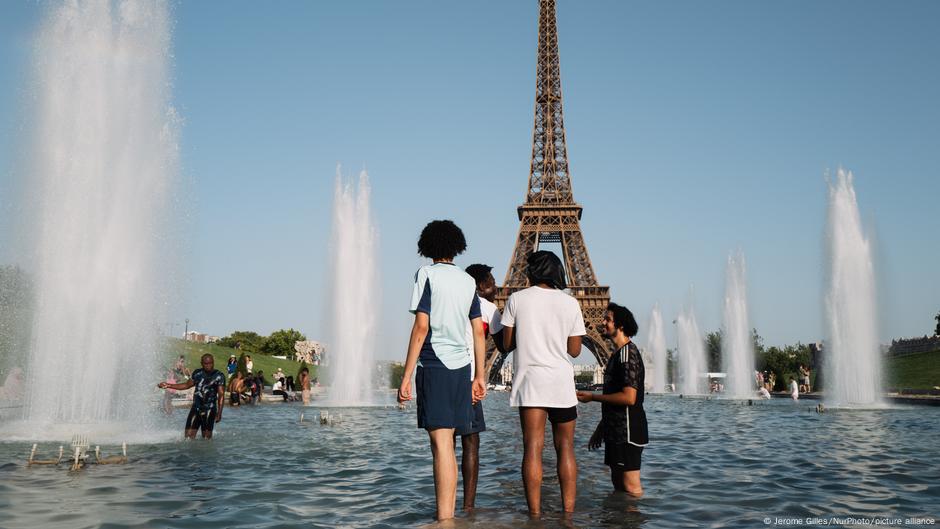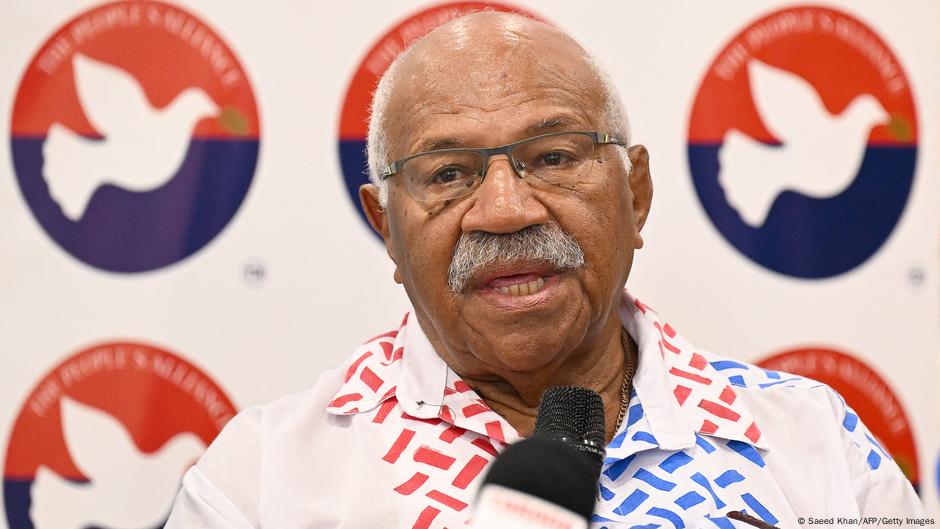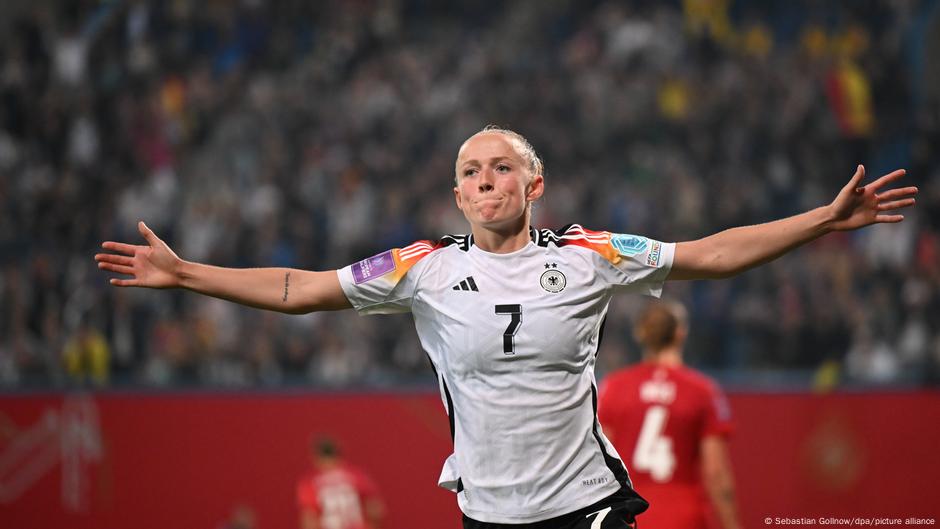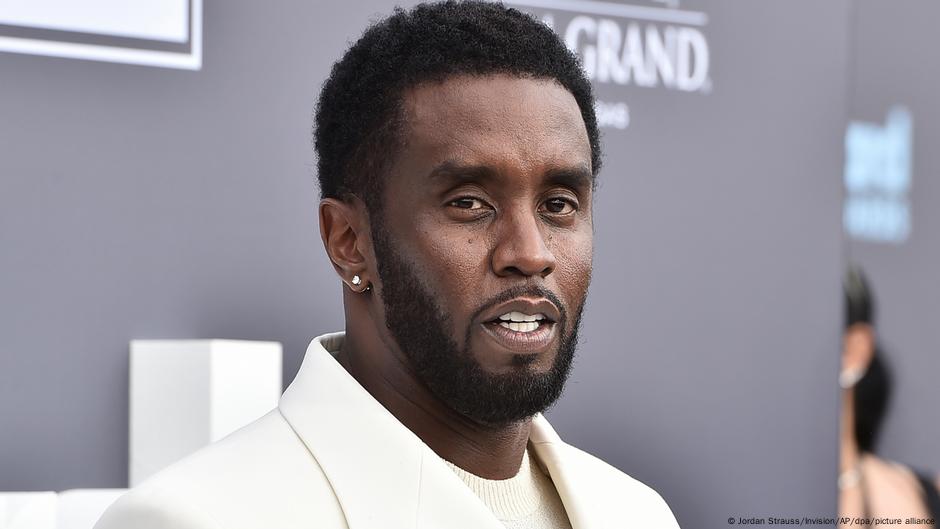LiveClimateEurope
Europe heat wave intensifies as fresh warnings issued
Elizabeth Schumacher | Amy Stockdale AP, AFP, dpa, ReutersPublished 07/01/2025Published July 1, 2025last updated 07/02/2025last updated July 2, 2025
https://p.dw.com/p/4wkoAEurope has been suffering from a heat wave for the past daysImage: Jerome Gilles/NurPhoto/picture allianceAdvertisementSkip next section What you need to know
What you need to know
- German schools seek protection as temperatures set to reach 40 C
- French and Spanish authorities have each reported two deaths related to the weather conditions
- Spain and Portugal report record heat in June
- UN climate agency warns heat waves will become more intense
Here are the top headlines regarding the heat wave in Europe on Wednesday, July 2:
Skip next section Deutsche Bahn announces nationwide disruptions07/02/2025July 2, 2025
Deutsche Bahn announces nationwide disruptions
Germany’s national railway operator Deutsche Bahn (DB) has announced nationwide disruptions due to heat.
Across the country, rail lines that had been due for maintenance could not be repaired due to unsafe conditions for workers.
DB also announced line closures in the country’s most populous state of North Rhine-Westphalia due to the weather.
Many DB-operated bus lines were also down, the company said, due to lack of air conditioning and other risks to equipment due to extreme heat.
https://p.dw.com/p/4wmi0Skip next section Eiffel Tower closes viewing deck07/02/2025July 2, 2025
Eiffel Tower closes viewing deck
Tourists would not be able to visit the viewing deck at the summit of the Eiffel Tower in Paris until Thursday at the earliest, city officials said, saying the decision was for “everyone’s comfort and safety.”
The Ile-de-France region, which includes the capital and its surroundings, said it had received at least 900 calls on the heatwave emergency hotline.
Some 300 people had been treated by local hospitals for heat-related illnesses, officials said.
https://p.dw.com/p/4wmZwSkip next section Major Italian cities see power cuts due to air conditioning07/02/2025July 2, 2025
Major Italian cities see power cuts due to air conditioning
It appeared that the power grids in several Italian cities were not equipped to handle the increased demand for climate control on Wednesday — leading to black outs in Rome, Florence, Milan, and Bergamo.
Air conditioning in homes is not the norm for Italy, even in the summer, but due to increasing heat waves, more and more people are buying units for their houses and apartments.
In Florence, some people got stuck in elevators and traffic lights stopped working across the city as the power went out.
Europe swelters as heatwave pushes into mid-40s
To view this video please enable JavaScript, and consider upgrading to a web browser that supports HTML5 video
https://p.dw.com/p/4wmaGSkip next section Dozens rescued from German train07/02/2025July 2, 2025
Dozens rescued from German train
Some 48 passengers had to be rescued from a train in the town of Elsfleth in northern Germany on Tuesday evening after it became stuck on a rail bridge.
The train was forced to make the unplanned stop due to a technical fault, which also caused the air conditioning to work at limited capacity.
As the carriages became hotter and hotter, the passengers called the local emergency rescue services, who were able to extract them from the bridge.
State police and ambulances rushed to the site to attend to the passengers and crew. Two teenage passengers had to be taken to a local hospital but no one was seriously hurt.
https://p.dw.com/p/4wmTfSkip next section Wildfire kills two in Spain07/02/2025July 2, 2025
Wildfire kills two in Spain
A wildfire that broke out in Spain’s Catalonia region due to the extreme heat and dryness has killed at least two people, authorities confirmed on Wednesday.
The blaze began in Torrefeta on Tuesday afternoon, and has destroyed large swaths of farmland.
“The fire was extremely violent and erratic due to storms and strong winds, generating a convection cloud that complicated extinguishing efforts,” the local fire department said in a statement.
Some 14,000 residents had been warned to stay inside their homes. However, the blaze was largely contained by Wednesday and the area was awaiting thunderstorms that were expected to further extinguish the fire.
https://p.dw.com/p/4wmPLSkip next section Thunderstorms forecasted to bring relief to France, Germany07/02/2025July 2, 2025
Thunderstorms forecasted to bring relief to France, Germany
Meteorologists in France and Germany have predicted that the continent’s deadly heat wave will likely break overnight on Wednesday, as rain and thunderstorms roll in from the Atlantic.
“Our latest forecasts confirm the arrival of cooling from the west on Wednesday, which will quickly affect the northwest of the country,” Meteo-France said, expecting thunderstorms near the German border.
Germany’s national weather service (DWD) said that while the mercury could hit 40 degrees Celsius in some parts of the country on Wednesday, the average was expected to fall to 27 by Thursday.
In Spain and Italy, which have seen the most extreme temperatures at up to 46 degrees Celsius or 114 Fahrenheit, the weather is expected to cool by the weekend.
https://p.dw.com/p/4wmKdSkip next section 2 dead as France marks second-hottest June on record07/02/2025July 2, 2025
2 dead as France marks second-hottest June on record
French scientists have said that June 2025 was the second-hottest for the country since it began keeping records in 1900.
“June 2025 has become the second hottest June since records began in 1900, behind June 2003,” French Ecology Minister Agnes Pannier-Runacher said on Wednesday morning.
Later on Wednesday, Pannier-Runacher said that “more than 300 people have been taken into emergency care, and two have died as a result of heat-related illnesses,” in the country.
French President Emmanuel Macron has attempted to enact climate protections, such as banning domestic flights, to varying degrees of success. However, some initiatives have resulted in major discontent from voters, including a fuel tax that led to the Yellow Vest protests that lasted from 2018 to 2020.
https://p.dw.com/p/4wmJmSkip next section EU green transition chief accuses political leaders of cowardice07/02/2025July 2, 2025
EU green transition chief accuses political leaders of cowardice
Teresa Ribera, who heads up the European Commission’s green transition team, has accused the bloc’s political leaders of being too scared to address climate change as life-threatening temperatures cripple Europe.
Speaking with the British newspaper The Guardian, she said that Wednesday’s forecast showed “absolutely terrible temperatures that have a very serious impact on ecosystems, on the economy and on health. And I think that there hasn’t yet been a real shift from the headlines about extreme meteorological phenomena to preparing people and understanding what needs to be done in the case of certain events.”
In light of this, she said she could not understand why many major political parties “continue to insist, quite vehemently, that climate change does not exist.”
Ribera said she believes that fear of how much it will cost — politically and financially — to address the climate emergency is driving much of the inaction, but warned that allowing climate breakdown will be much more costly in the long run.
https://p.dw.com/p/4wmJBSkip next section Extreme weather warnings across northern Europe07/02/2025July 2, 2025
Extreme weather warnings across northern Europe
National weather services across central and northern Europe have issued warnings over excessive heat in many of the continent’s largest cities, according to aggregator MeteoAlarm.
Brussels, Cologne, Hamburg, Frankfurt, Paris, and Budapest are all expected to see temperatures of at least 35 degrees Celsius, or 95 degrees Fahrenheit.
“Drink water several times a day. Continue to eat normally. Wet your body several times a day using a spray, a washcloth or by taking warm showers or baths,” read a warning issued by France’s meteorological service. “Do not go out during the hottest hours.”
Parisians found new was to cool off during the heat waveImage: Jerome Gilles/NurPhoto/picture alliance https://p.dw.com/p/4wmHDSkip next section Welcome to our coverage on Wednesday07/02/2025July 2, 2025
Welcome to our coverage on Wednesday
Elizabeth Schumacher with AFP, AP, Reuters, dpa | Zac Crellin Editor
Europe continues to suffer under a brutal early summer heat wave on Wednesday, with temperatures in southern Spain expected to read 40 degrees Celsius, or 104 degrees Fahrenheit.
Further north in Paris, temperatures are expected to drop slightly, but still hover around 35 degrees Celsius.
Meteorologists predict that rain and thunderstorms overnight should break the heat in many places by Thursday.
Schools remained closed in many cities, including in Italy and France, due to the weather — intensifying debate as to whether the school year needs to be adjusted to reflect the changing climate.
The heat has also affected cultural events and sports, with the Wimbledon tennis tournament in the UK, which continues on Wednesday, recording its highest-ever temperatures.
Europe bakes under ‘heat dome’
To view this video please enable JavaScript, and consider upgrading to a web browser that supports HTML5 video
https://p.dw.com/p/4wmFISkip next section Germany records highest temperature of the year — so far07/01/2025July 1, 2025
Germany records highest temperature of the year — so far
The German Weather Service (DWD) recorded the highest temperature of the year so far — 37.8 degrees Celsius (100.04 degrees Fahrenheit) — on Tuesday evening in Kitzingen, Bavaria.
The record, however, isn’t expected to last long as it could be surpassed on Wednesday, with temperatures expected to get even hotter.
“Then the peak will be reached, and it is quite possible that we will locally reach around 40 degrees,” a DWD spokesperson told the DPA news agency. That’s 104 degrees Fahrenheit.
From Thursday, it is expected to cool down slightly.
The all-time heat record for Germany was recorded on July 25, 2019, when 41.2 degrees was registered at the DWD weather stations in Tönisvorst and Duisburg-Baerl, both in the western state of North Rhine-Westphalia.
Fire crews in Germany, and elsewhere in Europe, are on alert for wildfiresImage: Julian Stratenschulte/dpa/picture alliance https://p.dw.com/p/4wm47Skip next section Italian cities face power outages amid heat wave07/01/2025July 1, 2025
Italian cities face power outages amid heat wave
Several Italian cities, including Florence and Bergamo, were hit with power outages on Tuesday amid a blazing summer heat wave.
The power grid was also overloaded near Milan.
The outages affected private homes as well as businesses and even traffic on the streets as traffic lights stopped working in some places.
Energy supplier Enel said it was working to restore power. The outages could be “related to the heat, which led to overheating and expansion of the power cables,” the company said.
Italy has been experiencing sizzling heat for days, with heat alerts having been issued in over a dozen cities, including Rome.
Heat alerts have been issued in over a dozen Italian citiesImage: Remo Casilli/REUTERS https://p.dw.com/p/4wm44Skip next section WATCH: Europe bakes under ‘heat dome’ 07/01/2025July 1, 2025
WATCH: Europe bakes under ‘heat dome’
This June, many parts of Europe sweltered under the highest temperatures ever recorded for the summer month. Scientists say these extreme conditions are caused by a familiar weather pattern exacerbated by global warming.
Europe bakes under ‘heat dome’
To view this video please enable JavaScript, and consider upgrading to a web browser that supports HTML5 video
https://p.dw.com/p/4wm2ySkip next section How hot were different European cities on Tuesday?07/01/2025July 1, 2025
How hot were different European cities on Tuesday?
https://p.dw.com/p/4wm2xSkip next section Brussels’ Atomium cuts hours as heat wave bites07/01/2025July 1, 2025
Brussels’ Atomium cuts hours as heat wave bites
The Atomium is a popular location in Brussels Image: Werner Lerooy/Zoonar/picture alliance
The Atomium, one of Brussels’ top tourist draws, is closing early on Tuesday and Wednesday due to the heat wave, the monument’s management said on its website.
The landmark features nine stainless steel spheres linked by narrow steel tubes, forming a giant cube balanced on its tip.
Inside, the spheres hold exhibitions and a restaurant, with visitors moving between them by stairs and escalators.
https://p.dw.com/p/4wldKShow more postsElizabeth Schumacher Elizabeth Schumacher reports on gender equity, immigration, poverty and education in Germany.Send us your feedbackYour feedback
Sursa: DW









